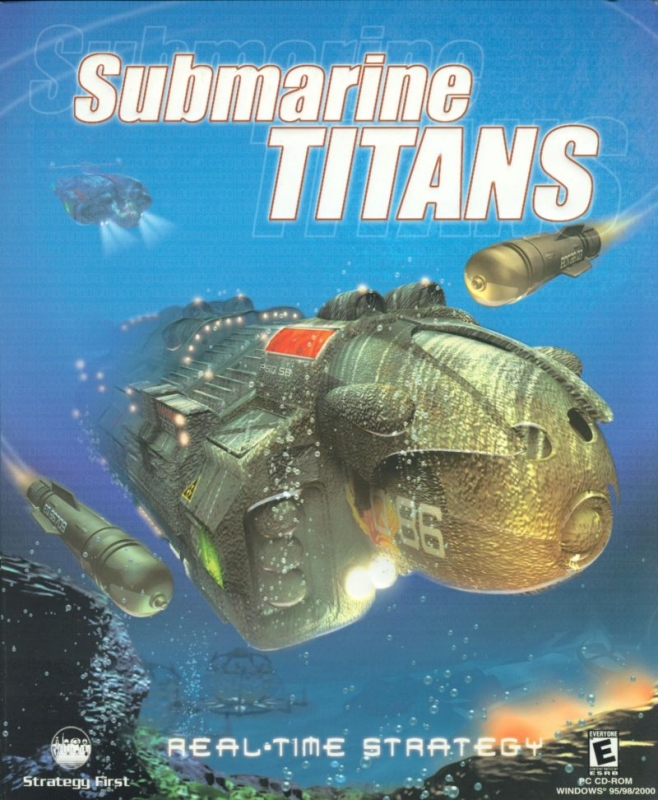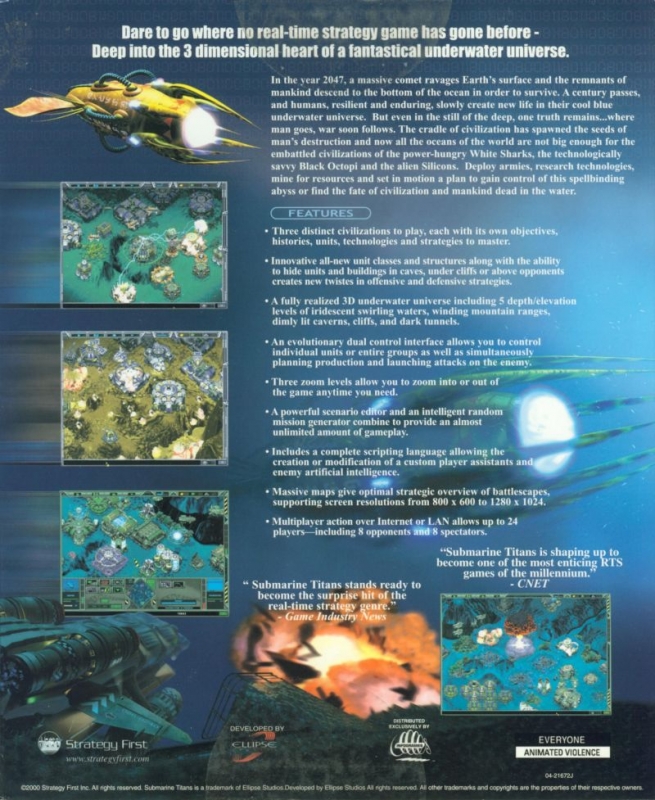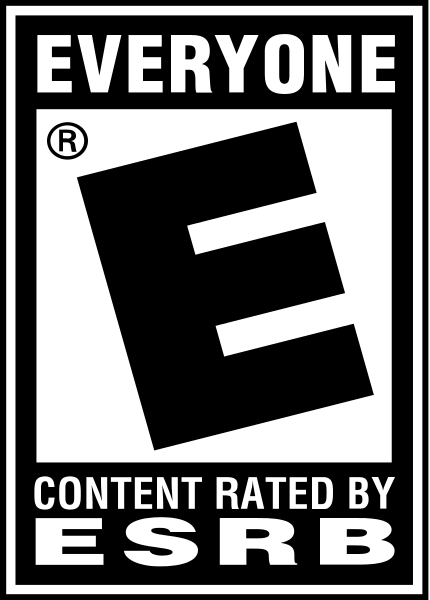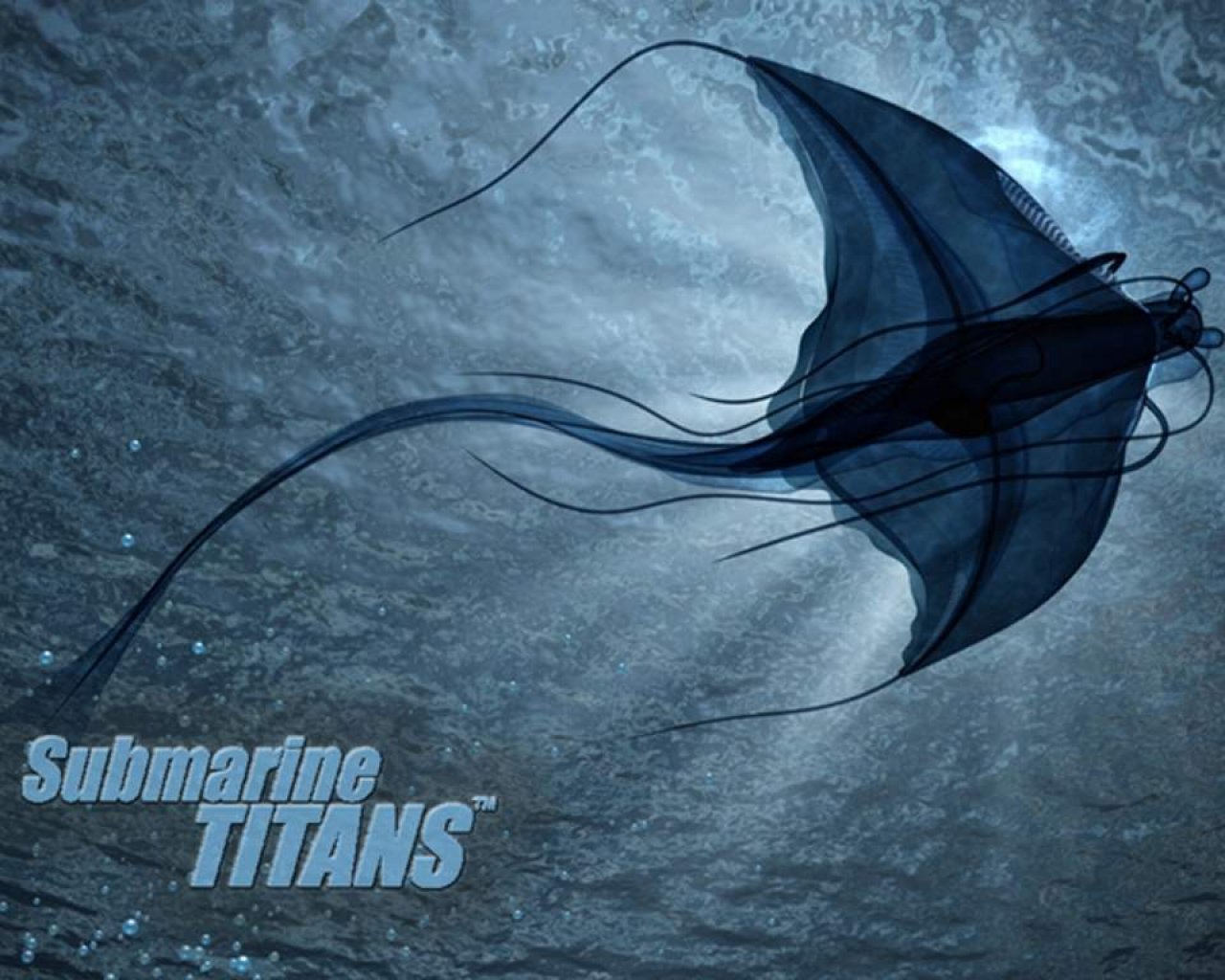Existing User Log In
New User Registration
Register for a free account to gain full access to the VGChartz Network and join our thriving community.





America - Front


America - Back



Ellipse Studios
Strategy
 08/09/00 Strategy First
08/09/00 Strategy First  (Add Date)
(Add Date) 05/17/01 FX Interactive
05/17/01 FX Interactive
| Owners: | 2 | |
| Favorite: | 0 | |
| Tracked: | 1 | |
| Wishlist: | 0 | |
| Now Playing: | 1 | |
01st Dec 2018 | 5,567 views
Game: Submarine Titans.
Platform: PC
Year: 2000.
Developer: Ellipse Studios.
Genre: RTS.

The concept of the “hidden gem” is something everyone can understand easily. Something noteworthy and with remarkable quality that, for one reason or another, been relegated to obscurity. Everyone knows that, and everyone can safely say they’ve found one or two cases of that throughout their lives. This is not limited to videogames, of course, but the quick growth of the market and the limited chances of release and distribution many software programs find themselves increases the chances of good products becoming properly well known. To be fair, sometimes the game itself is too niche and specific to be liked by the general population, or even a considerable crowd, so it ends up being talked about and discussed in very fringe and reduced circles, especially if ends up competing in an overcrowded market. Now, like I’ve remarked time and time again, the period around the 2000s was a great boon for Real Time Strategy games. From behemoths such as Age of Empires II, StarCraft, Dawn of War, C&C Red Alert, Warcraft III, Homefront, Company of Heroes… All of this titles were sweeping the PC videogame landscape, thanks to computers finally becoming an accessible enough product and internet/LAN capabilities improving to the point stable multiplayer was possible. All of this, of course, caused an avalanche of copycats. Dozens upon dozens of small companies tried to jump into this popular genre. And they found themselves fighting for the smallest possible spot in the limelight. The thing is that, for the most part, this period was very good for budget titles, which were able to fill the gaps between the stars of the show by offering a quality product for a modicum price, as well as publishers dedicated to translate and distribute this games. During the 2000s I found myself playing a lot of different RTSs, and out of all of them, none are more interesting and unique than my favorite obscure game of all time: Submarine Titans.
Submarine Titans is a Real Time Strategy game set in the not so distant future, where humanity has been forced to retreat into the depths of the oceans in order to survive. According to the backstory of the game, in the year 2047, the impact of the comet Clark into the planet caused a series of chained reactions that rose the sea levels to apocalyptic degrees and turned the remaining surface of the planet into a barren radioactive wasteland. The surviving human beings have retreated into the depths of the ocean, where the radiation cannot harm them and life is still possible. This disaster has caused humanity to split into two factions: the White Sharks, a militaristic state that wants to reunite humanity and rule the seas whole, and the Black Octopi, a society controlled by scientists who want to avoid damaging the remaining of the planet’s ecosystem at any cost. These two factions fight for the control of a rare isotope of Corium, brought in massive quantities by the meteorite, and that has allowed humanity to develop massive technological leaps. However, this two factions suddenly discover that the comet was not just a random asteroid, but an alien spaceship, occupied by the mysterious Silicons, who also want to take all the corium for themselves, threatening the survival of mankind as a result. The seafloor then becomes a three-way war between this factions.
Before starting this review, a bit of warning. This game is old, with the latest version of the game (and the one recommended to play) being released in 2001. As such, it may suffer from compatibility issues with modern Windows systems, but I was able to solve them through the use of the compatibility settings. There’s also a surprising amount of tutorials on the internet on how to solve any possible compatibility this game may have with modern OS, so there should be no problem if you want to play it yourself. And if you’re worried about resolution, Submarine Titans supports up to 1280x1024 resolutions, so you shouldn’t have any problem with that.
As this game’s plot suggests, this game takes place in the depths of the ocean. As such, this is probably the only underwater RTS game I’ve ever played, and it’s very possible that’s the only underwater RTS ever made period. You control one of the three civilizations previously mentioned, and your units will vary between buildings and other solid structures, and the titular submarines. The game also shows an insane degree of complexity by adding not only the typical 2D movement and isometric perspective, but also 3D movement, being able to move your units up and down, as well as in every other direction. This adds a layer of strategy: you have to think the height of the emplacement of your buildings, the control and movement through certain bottlenecks on the map… You can even avoid enemy attack by moving up and down, evading enemy torpedoes and lasers by moving out of the way. And by the same token, trying to keep your submarines with adequate deployed formations is paramount to maximize your damage output before running out of ammo. Though it is sometimes difficult to know in which of the five depth levels your submarines are in, and that can be annoying. Outside of this detail, people who have played an RTS before will be familiar with most of the elements and mechanisms present in this game: you collect resources with your civilian submarines, you build your submarine cities, you invest in new technologies to improve your units or to create new ones… It does not deviate that much from the common template that Age of Empires and StarCraft set for RTS, outside of that of the added level of movement depth.
The presentation of the game is stellar. Graphics wise, this game has aged like fine wine, with models of each building and submarine being made out of detailed sprites, which show different effects depending on its activity. The seafloor is filled with detail too: coral riffs, volcanic eruptions, gas columns, forests of algae, the ruins of buildings and cities drowned… There’s a ton of wildlife swimming across the sea, from jellyfish to squids to schools of fish, and some of them are relevant to the gameplay, with some civilizations being able to use certain technologies to control the wildlife (like the White Shark’s Shark Control Center). The lighting in this game is great too, with four different types of illumination giving each map a different shade. Some people may complain that all this does not really make for the most realistic of simulations of the underwater landscape, but if we were to go that route, we would just show a completely dark map, since there is no light down there, and would hurt the gameplay by being too dark. In this case, gameplay over form is the correct choice. A while ago, I reviewed a game named Nightside, and complained at the deficient detail and lighting of the world. If someone of the Nightside team is reading this, please check how Ellipse Studios did that here, it will help your next project quite a lot. The player has at his disposal an interface bar that covers the bottom of the screen, in which is displayed the last submarines and buildings you used, the one currently selected, a map, an option to rotate the map (important to detect any possible detail with the depth), a timer, a zoom option and the amount of submarines you currently control. The ability to see not only your currently selected unit, but the previous ones too, is a really helpful feature, allowing for quick decisions and unit movement, though this feature depends on the game’s current resolution: the smaller the resolution is, the less units you can see at the same time. Though this should not be a problem anymore, since everyone can play it at its maximum resolution, 1280x1024. The design of the submarines are great too, with the Silicons taking the crown with their sea life-like bioconstructs having the most creative units and buildings. However, some people also comment that, for beginners, the shape and design of the building structures are not that intuitive, and may take some time to know which one does. While I don’t really find that complain that important, it does touch a certain complain that I will talk about later. The soundtrack is good, although very limited. There are six tracks, two per faction, one peace theme and a war theme. They are appropriate enough for the game, though the switch between them can be jarring.
Gameplay-wise, the game is similar to other RTS. Each of the three factions have different elements and characteristics that make them unique: White Sharks are the most balanced army in the game, with decent speed and firepower, but due to them not having the same level of technology as the other factions, they don’t have access to strong defenses until later in the game, and also have more limited special buildings and abilities. The Black Octopi, though they are supposedly pacifists, have the units with the highest attack and defense in the game, but this is compensated by their units being more expensive and slow to move and produce, so they can be victims of early rushes and each loss is a hard one. They also have a decent amount of special units and abilities, though once again, they take longer to produce and are quite expensive. Lastly, the Silicons’ units are weak but cheap, especially the basic subs, so they can become a rather dangerous spammer. They also need only three kinds of resources, when the human factions need four, and have the faster builders in the game (though they are one-use only in comparison to the human builder submarines). You start every match with one builder sub (or a couple of builder capsules with the Silicons), a couple of gatherer units and a bunch of military units. You then start creating a base of operations, and from there you start searching for the resources in the map. There are six types of resources in this game, though the human factions only use four of them and the Silicons use three.
-Metal: Used to build buildings and structures by the human factions. It can be found in Metal deposits
-Corium: Used by everyone, it serves to develop special submarines, structures and technologies. It can be found in Corium deposits.
-Gold: Used by the human factions to trade and to develop new sciences. Instead of being found in mines, this resource has to be extracted through gold extractors, extracting gold through a great portion of the map, so it’s better to have them as spread around as possible for maximum efficiency.
-O2 (Air): Used by the humans to, well, breathe. Without enough air, the production and research start slowing down, so having enough O2 factories is really important to keep your faction at peak performance.
-Silicon: Used by the Silicons to produce submarines and structures. This resource is produced by building Silicon Extractors, who cover great areas of the game, like gold, so the amount of space you can control will greatly influence this.
-Energy: Used by the Silicons the same way humans use O2, only this is extracted from metal mines.
The kind of submarines you can produce is really diverse, from the basic units with low attack and high speed, to the big heavy submarines. There’s also the civilian submarines (builders, gatherers, mobile repair platforms and commercial transports) and special military submarines, which can be very different depending on the faction, though they all have units that can capture enemy buildings, teleporting scouts, and other basic templates. The building and structure choice in particular is staggering, and I can see how it can intimidate inexperienced players, seeing that many buildings are incredibly specific in their purpose, either to protect against a particular weapon or to offer a tiny benefit from its use. Likewise, this brings us to one of the biggest problems of the game, its tech tree. Each civilization has a massive technology tree that they have to discover, with so many options and choices that most sessions will end before unlocking half of the skill tree available. This can be seen in two ways: the game’s depth offers a lot of options and flexibility to which develop different strategies with, but I can also see people miffed about not reaching the cooler options and weapons at the end of the skill tree. Especially the weapons of mass destruction, since they are incredibly powerful and a spectacle to behold, though they are arguably not cost-efficient, since they take too much to research and produce, not to mention their high cost. There is arguably also a problem with the game’s speed, which is noticeably slower than other RTS. To be fair, this makes sense, underwater units can’t move at very high speeds, especially in the deepest parts of the ocean, but it can alienate certain players who prefer more dynamic styles of gameplay. If I had to compare it to other game, the general movement of the game is slightly slower than Age of Empires II, so you won’t find StarCraft-like zerg rushes after a couple of minutes into the game. And, to be fair, the game offers you the option of using a very advanced AI (especially remarkable for its time, considering this came out in 2000) that could play certain parts of the game for you. That’s right, the computer can take charge in organizing your economy, your base, even your military. It reaches a point where the AI can play the whole game for you, and do a surprisingly good job of it, though I recommend turning it off, as it kind of rubs the player’s merits from playing. There is also a big problem with the mouse controls. In most RTS, the left button is used to select units and the right one to move and choose certain actions. In Submarine Titans, it’s the other way around. I’d say this game came early on in the RTS gold rush, but it came out months after StarCraft and considerably later than the original Age of Empires, so the standard was already settled. You can get used to it, but it is annoying nonetheless. Sometimes combat can be somewhat chaotic, due to the before mentioned 3D depth, with many battles ending up as two submarine packs shooting at each other. Some volleys can hit the intended sub, some can fail and hit the submarine behind your target, and some can fail completely. This adds a small element of random luck, but it can be mitigated by producing enough ammo and making the adequate choice of submarines. Micromanaging units is a lot of fun, though, and smart players will realize early on the value of minelayers that can make whole areas of the map inaccessible (again, be careful of the depth of the mine, ships can just swim above or under them to a certain degree). Submarines that can capture buildings are useful with guerrilla tactics and in the control for resources, though there’s always the chance of the building not being captured, that percentage can be increased or decreased with different techs. The game also has an incredibly detailed map creation feature, allowing you to make their own scenarios and missions, with a surprising degree of complexity, though it has to be accessed from outside the game.
The game has three campaigns, plus three tutorials. The tutorials are simplest stuff, each one teaches how to control the basics of the game and that’s it, instead of going into more depth on the late game technologies and submarines, which could actually need some explaining. Each campaign puts you in command of one of the three factions, with ten levels on every campaign. The three share a similar story: the White Sharks and the Black Octopi are fighting each other, and then the Silicons appear, and the war turns into a web of alliances and betrayal, with the objective of erasing the other two factions from the planet. One thing from the story I like is that no one is made explicitly a villain: the White Sharks are militaristic and threaten to damage the remaining of the planet’s ecosystem, but if it wasn’t for them forcing both human factions to arm themselves, they would’ve been completely undefended against the alien invader. An alien invader that just wants to get the hell out of Earth. Their spaceship malfunctioned and ended uo crashing, and their objective throughout all of the campaigns is to collect all of the corium to activate a teleporter that will allow them to go back to their planet. It is indeed implied that the planet Earth is poisonous to them, and thus have no intention to conquer it. Though they seem to have harmless motivations, for them to achieve their goal would mean draining the Earth of Corium, condemning Humanity to an energy crisis that would wipe them out for good. The White Shark’s surprising initial alliance with the Silicon (at least in the BO and SI campaigns) may seem hypocritical at first, but then you remember that the Black Octopi’s army is stronger but less numerous than their own, and if they ally with the Black Octopi against the aliens, they’d have enough time to put their industrial power to motion, surpassing them in both numbers and technology in the end. They want to cover their backs before attacking the Silicons, who are too distracted with Corium gathering to offer a serious resistance at first. The first levels of each campaign are relatively easy no matter the difficulty. The problem comes when the “capture and defend certain structures” missions start popping up. Capturing a building means destroying any surrounding enemy presence first without harming the structure, then capturing it, and then defending it from the inevitable retaliation. This can be rather annoying with the White Shark, due to them having many missions centering on the capture of the BO’s investigation centers. Their many, many investigation centers. Their many, heavily defended investigation centers. Suffice to say, savescumming can be essential with certain levels. The final levels of each campaign are quite a challenge in their own right, due to the strength of the enemies present and the limited amount of resources, and they will test the players’ skills and patience thoroughly.
Sadly, for all the good this game did, its poor financial results ended up killing the company. In a 2008 game design presentation, one of the chief designers of the game confirmed that the total sales of the title were around 30.000 units, and described it as not a financial success. The reasons for this sales failure are many, though in my opinion the two most important explanations are the lack of advertisement (due to it being a budget title) and StarCraft coming out just months early, ending up buried under the shadow of Blizzard’s project. Submarine Titans ended up being the last title of Ellipse Studios, closing down soon after. At this point the game is probably abandonware, and even if it wasn’t, the lead developer has commented in GOG’s forums that resurrecting this game is extremely difficult, so there is little chance to see it being sold again.
Submarine Titans is one of the most unique games I’ve played, period. Despite some annoyances here and there, the more I play this game the better it gets. Maybe it’s because RTS as a whole disappeared after the 2010s, but the potential this game had is astounding. The depth, complexity and playability of the title far surpasses what was expected of a budget title, even now, and the presentation has not aged a day. I can’t recommend this game enough, especially to RTS fans who want a more tactical experience and don’t mind dedicating their time on each match.
Score: 9/10
|
|
Darwinianevolution
posted 31/12/2019, 01:19
https://www.gog.com/game/submarine_titans After more than a decade of being abandonware, Submarine Titans is back on sale! Message | Report |
|
|
Darwinianevolution
posted 25/06/2018, 03:44
Guys, I actually found the sales of Submarine Titans! This is a slideshow made by Craig Thomler in 2008, one of the game designers of the game. https://www.slideshare.net/CraigThomler/game-design-bar-camp-canberra-2008 I guess he gave some talks about game developing at some point in 2008, and he used ST as an example. He said the sales of ST are aproximately 30k, and considering that, by 2008, the game was out of the market, the numbers there are probably quite accurate. He also said this game flopped, which is sad, but not unexpected. Message | Report |
|
|
Darwinianevolution
posted 16/04/2018, 12:11
There's a GOG Wishlist for this game here. https://www.gog.com/wishlist/games/submarine_titans Please comment there if you can, this game deserves a release compatible with modern PCs. Message | Report |